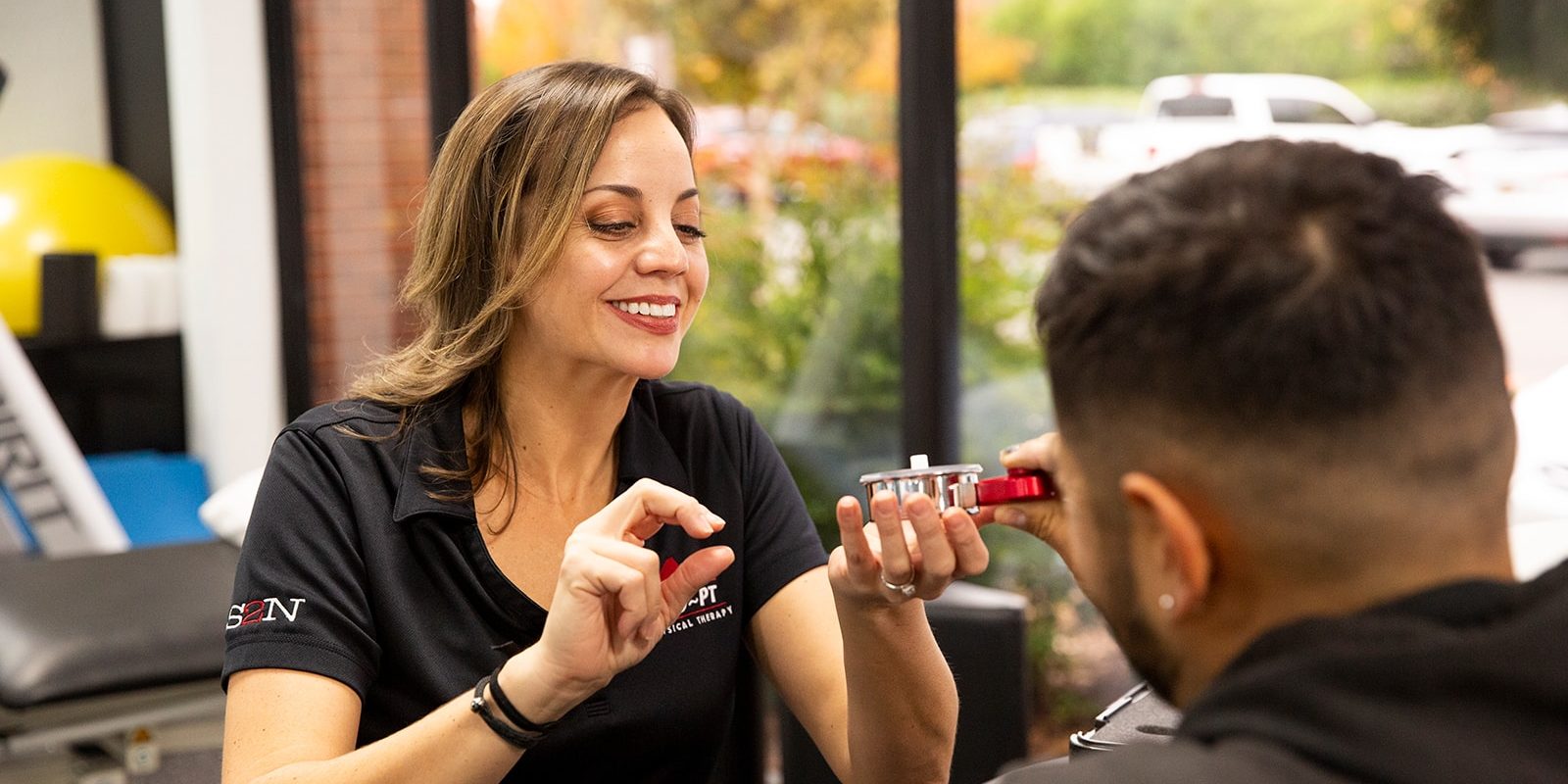If you’ve never been to physical therapy, we understand that the thought of your first visit can be intimidating. We’re here to assure you that your first visit will be a positive experience—just like all of your follow-up visits.
During your first visit, you can expect the following:
- Please be sure to wear loose-fitting clothing so that the affected body part can be thoroughly examined. Any shoes are fine, as long as they can be removed if necessary.
- Arrive at your appointment with your paperwork completed to save time. You can download those forms here.
- You will provide us with your referral for physical therapy if you have one. If you don’t have a referral, let us know when you schedule your first visit with us (note – a referral is not always needed).
- We will copy your insurance card.
- You will be seen for the initial evaluation by your dedicated therapist.
- Most physical therapy sessions are about one hour, but your first appointment might be slightly longer than that if there are additional forms to fill out.
- There may be other people being treated while you’re being treated, but you will have a physical therapist to yourself, and the initial exam typically takes place in a private room.
- You may experience some discomfort during treatment, but your physical therapist will manage that discomfort, and you won’t ever be in excruciating pain.
The therapist will discuss the following:
- Your medical history
- Your current problems/complaints
- Pain intensity; what aggravates and eases the problem
- How the pain is impacting your daily activities or your functional limitations
- Your goals with physical therapy
- Medications, tests, and procedures related to your health
The therapist will then perform the objective evaluation, which may include some of the following:
- Palpation – Touching around the area of the pain/problem. This is done to check for the presence of tenderness, swelling, soft tissue integrity, tissue temperature, inflammation, etc.
- Range of Motion (ROM) – moving the joint(s) to check for the quality of movement and any restrictions.
- Muscle Testing – Checking for strength and the quality of the muscle contraction. Pain and weakness may be noted. Often the muscle strength is graded. This is also part of a neurological screening.
- Neurological Screening – Checking to see how the nerves are communicating with the muscles, sensing touch, pain, vibration, or temperature. Reflexes may be assessed as well.
- Special Tests – Performing special tests to confirm/rule out the presence of additional problems.
- Posture Assessment – Assessing the positions of joints relative each other and comparing to ideal placements.
Your therapist will then formulate a list of problems you are having and how to treat those problems. A plan is subsequently developed with the patient’s input. This includes how many times you should see the therapist per week, how many weeks you will need therapy, home programs, patient education, short-term/long-term goals, and what is expected after discharge from therapy. This plan is created with input from you, your therapist, and your doctor.
Contact us today to schedule your first appointment with a therapist at PRO~PT.







